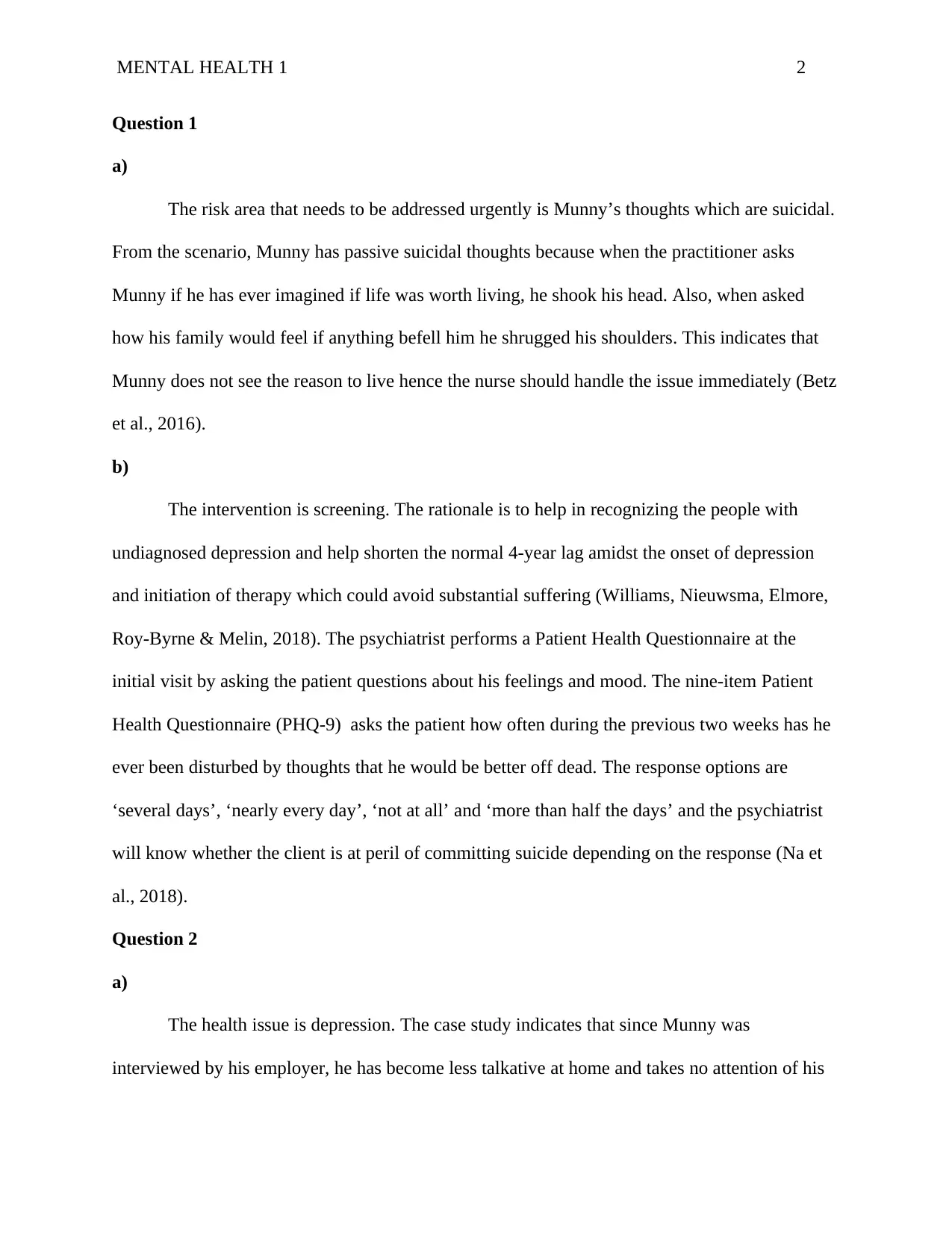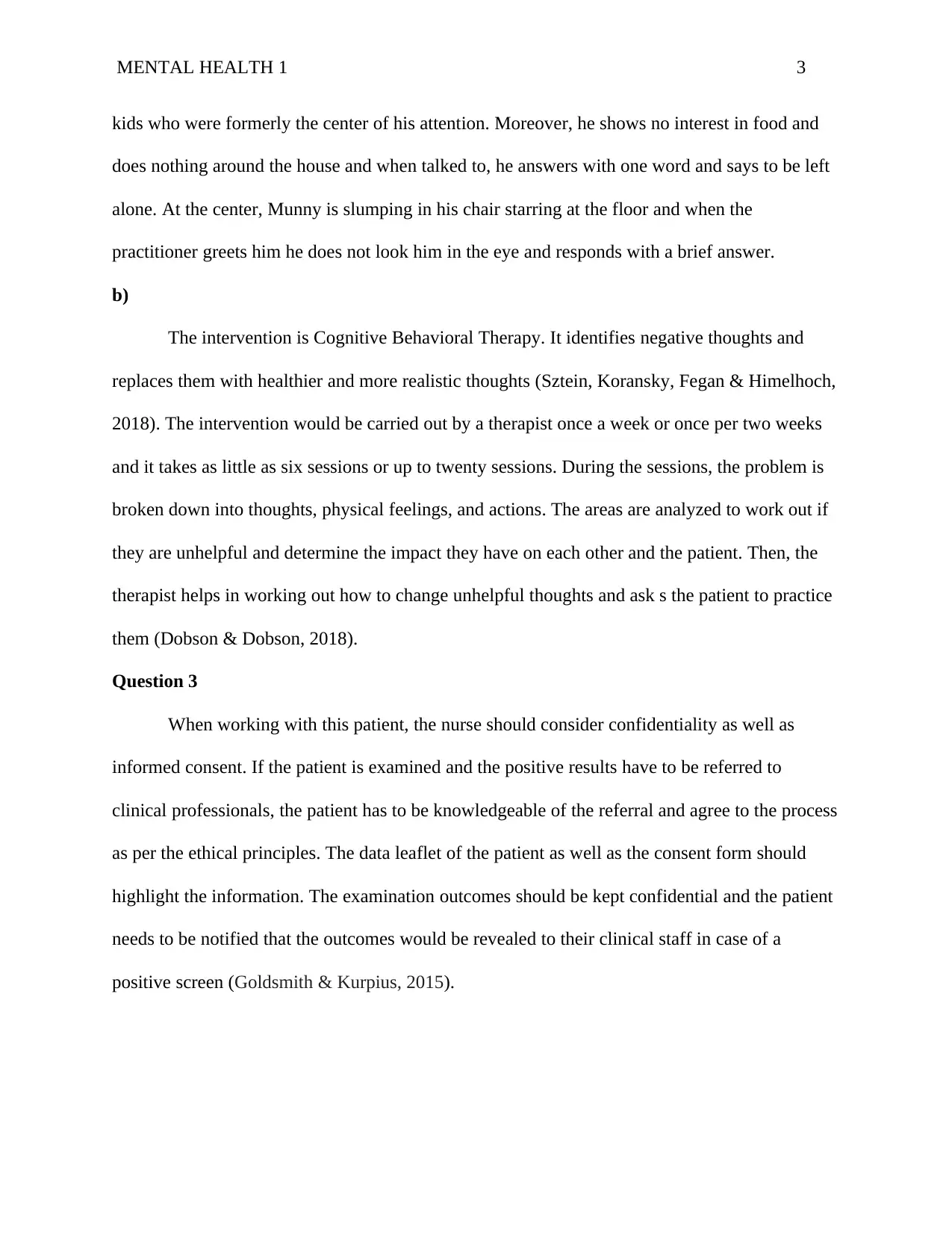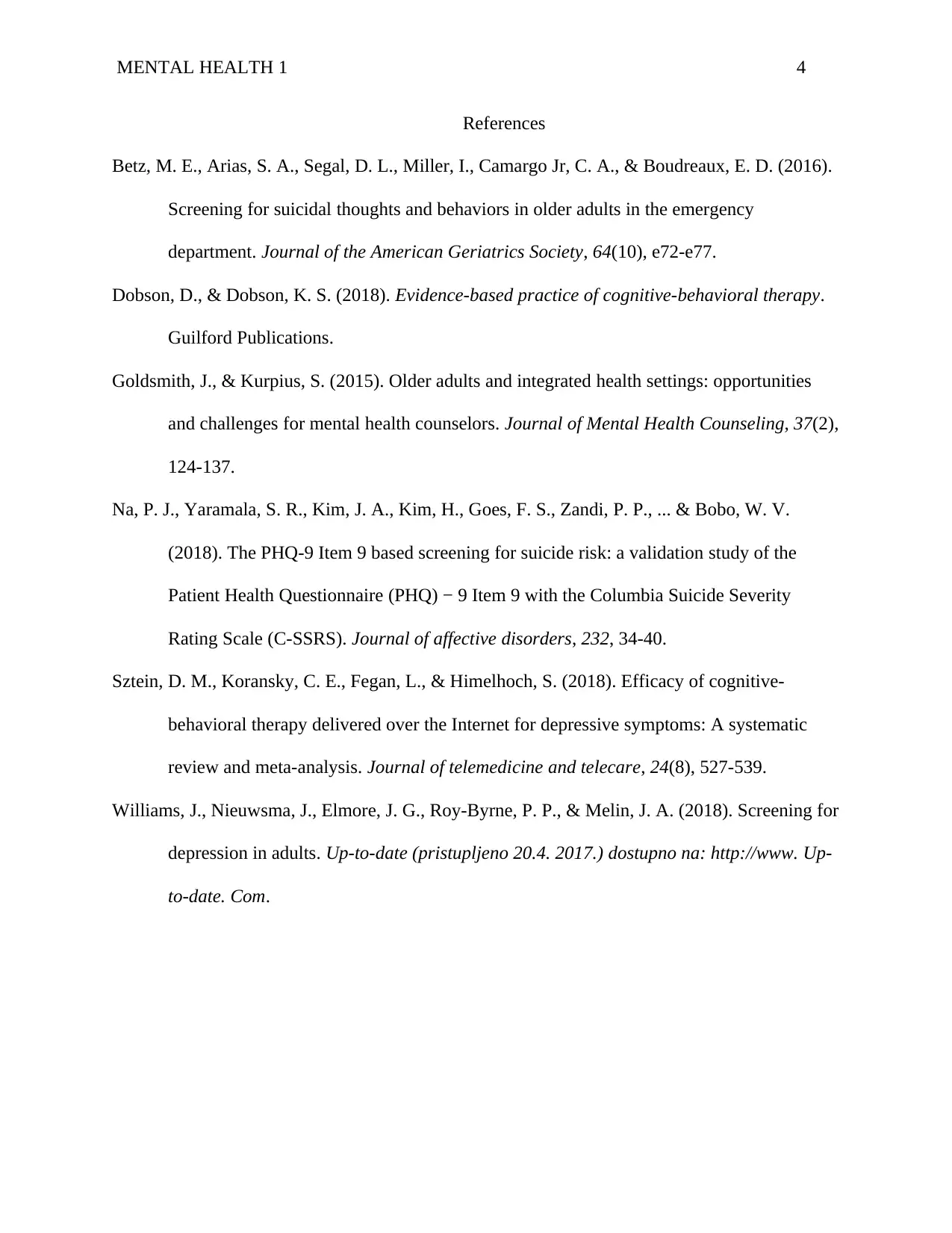401013: Mental Health Case Study Analysis and Intervention
VerifiedAdded on 2022/10/02
|4
|942
|27
Homework Assignment
AI Summary
This assignment analyzes a mental health case study, focusing on a patient exhibiting suicidal thoughts and symptoms of depression. The analysis addresses the urgency of the situation, particularly the patient's passive suicidal ideation, and emphasizes the need for immediate intervention. The document outlines the use of screening, specifically the Patient Health Questionnaire (PHQ-9), to assess the patient's risk. It identifies depression as the primary health issue, detailing the patient's behavioral changes. The intervention strategy proposed is Cognitive Behavioral Therapy (CBT) to address negative thoughts and promote healthier thinking patterns. Ethical considerations, including confidentiality and informed consent, are highlighted as crucial aspects of patient care, particularly concerning referrals and data sharing. The analysis references several scholarly articles to support the interventions and ethical practices discussed.
1 out of 4










![[object Object]](/_next/static/media/star-bottom.7253800d.svg)